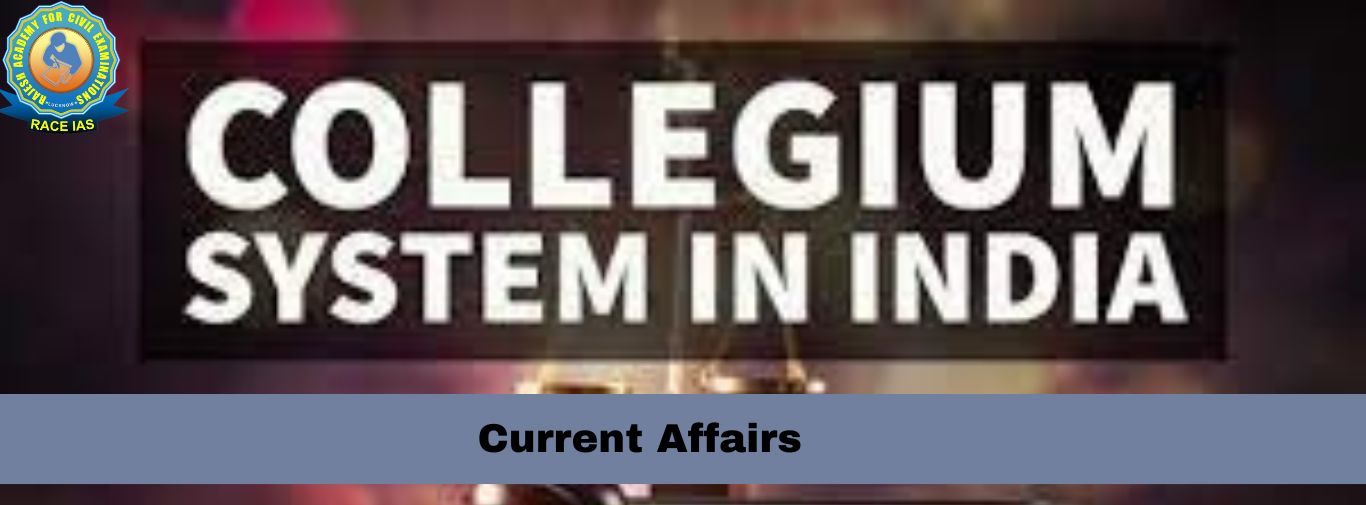
Collegium System Vs Central Government
COLLEGIUM SYSTEM VS CENTRAL GOVERNMENT
- Keywords: Collegium System, Articles 124 and 217, How Collegium System Developed, National Judicial Appointments Commission, Conflict between Central Government and Judiciary.
- Mains Exam Syllabus: Appointment to various constitutional posts, powers, functions and responsibilities of various constitutional bodies. Evolution of the collegium system and its criticism.
Reference:
- Recently, to end the impasse between the central government and the judiciary regarding the appointment of judges, the Union Law Minister suggested the inclusion of government representatives in the Supreme Court and High Court collegiums and the constitutional process of appointing judges.
- For this, the Union Law Minister has also suggested the formation of a 'search and evaluation committee' consisting of representatives of the Central and State Governments for the selection of judges of the Supreme Court and High Courts.
Collegium System:
- Collegium is a system developed through the judgment of the Supreme Court, which deals with the appointment and transfer of judges.
- Articles 124 and 217 of the Constitution of India deal with the appointment of judges to the Supreme Court and the High Court respectively.
- But the collegium system is not established by any Act of Parliament or provision of the Constitution. That is, there is no mention of collegium system in the constitution.
Evolution of the Collegium System:
- First Judge Case (1981)
Under this, the supremacy of the suggestion of the Chief Justice of India on judicial appointments and transfers can be rejected, provided there is a valid reason behind it. By doing this, the supremacy of the executive over the judiciary was established for the next 12 years.
- Second Judge Case (1993)
Initiating the collegium system, the Supreme Court said that consultation here actually means consent. The opinion to be taken in this will not be personal of the CJI but will be the opinion taken in consultation with the two senior most judges of the Supreme Court.
- Third Judge Case (1998)
The President issues a Presidential Reference. Under this, the Supreme Court recognized the collegium as a group of five members, which would include the CBI and the four senior-most judges.
- Members of the Collegium
The Collegium of the Supreme Court is headed by the Chief Justice of India. Four other senior most judges of the Supreme Court are its members.
While the Collegium of the High Court is headed by its Chief Justice and four other senior judges are its members.
The judges of the higher judiciary are appointed through the collegium system and only then does the role of the government come into play in this process.
Appointment process of judges:
- The Chief Justice and other judges of the Supreme Court are appointed by the President of India.
- The appointment of the Chief Justice is done on the basis of seniority. The system of collegium in appointment The appointment of judges to the Supreme Court is recommended by a collegium to the President.
- If the President wants, he can accept or reject the recommendation. If it declines, the recommendation is returned to the collegium. If the Collegium sends its recommendation to the President, then the President has to accept it.
- The Chief Justice of the High Court is appointed on the basis that the person to be appointed as the Chief Justice shall not be from the concerned state but from some other state.
- The selection is decided by the collegium. High Court judges are recommended by a collegium consisting of the CJI and the two senior-most judges.
Reasons for the standoff between the government and the judiciary:
- Suspicion of favoritism and nepotism: There are no specific criteria for judging judges in this system, due to which there is a suspicion of favoritism and nepotism.
- Lack of principle of checks and balances: There is a complete lack of checks and balances in this system, while all the three institutions, the legislature, the executive and the judiciary, being an integral part of governance, follow this principle.
- Lack of women leadership: There is a lack of women representatives in the system.
- Closed-door system: This system has no official secretariat and no public information is received from it.
Efforts of Central Government to improve the Collegium System:
- The dispute over the appointment of judges between the government and the judiciary dates back to 2014.
- Arguing for transparency and accountability in the appointment process of judges, the government constituted the National Judicial Appointments Commission in the year 2014 through the 99th Amendment Act of the Constitution.
- Provision was made to make 6 people members in this commission-
- Chief Justice of India
- Union Law Minister
- Two senior most judges of the Supreme Court
- Two experts
- In October, 2015, the Supreme Court invalidated this National Judicial Appointments Commission Act by saying that –
- This hinders the independence and autonomy of the Supreme Judiciary.
- This affects the 'Basic Structure of the Constitution'.
Conclusion:
- The present collegium system of the country is like the tradition of making "judge's boy judge" on the lines of making "wrestler's boy wrestler".
- Even though, more capable judges are present in the courts than these judges, but this practice is not healthy for a democratic country like India because there are many anomalies in this collegium system, so the government should bring a fair law to reverse it so that The monopoly of the judiciary in India's judicial system should end and at the same time the participation of equal talented representation could be ensured.
----------------------------------------------------------------------------------
Mains Exam Question: What is Collegium System? Critically examine the decision of the Supreme Court on the National Judicial Appointments Commission Act, 2014 relating to the Judges of the Supreme Judiciary in India?